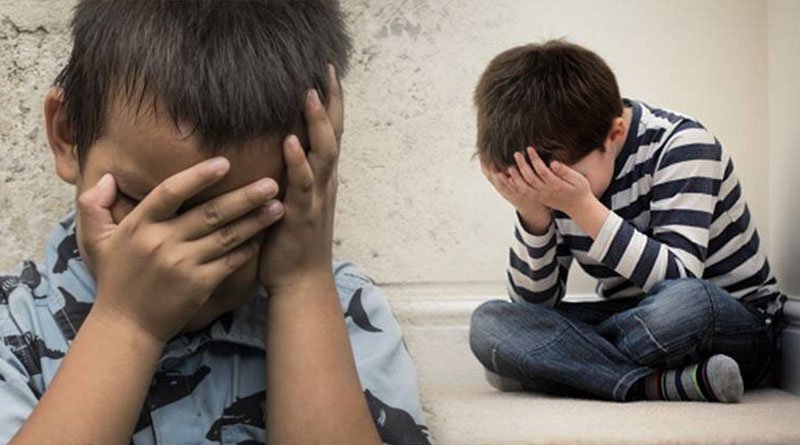Despite rising rates of depression in children, it often goes unnoticed by parents. Research done to highlight parental factors revealed five main barriers hindering early recognition of depression by parents.

Do you find it surprising that a youngster could suffer from a depressive disorder? Adults talk about anxiety and sadness a lot throughout the day, but research indicates that the prevalence of childhood depression is also increasing. Children, unlike adults, are unable to control their emotions.
A child’s behavior can reveal daily variations in emotional states. However, to distinguish “childhood blues” (occasional sadness typically seen in children) from depressive illness, one must pay meticulous attention.
When to suspect childhood depression
Children are said to be depressed when;
They persistently feel sad or uninterested in their surroundings, and act hopeless in situations they can change.
- Their eating patterns are disturbed, either increased or decreased appetite or altered response to previously favorite food items
- Their sleep patterns are disturbed, sleeps too much or sleeps at unusual hours
- Altered level of energy, either feeling exhausted and low in energy all the time
- They felt low self-esteem, or
- They show self-destructive behavior, may harm themselves or in severe cases may attempt suicide
How frequent childhood depression is
CDC (Center for Disease Control and Prevention) data suggest an increasing trend in childhood anxiety and depression. It is shown in the data that
- 9.4% of children aged 3-17 Y (approximately 5.8million) had an anxiety disorder in the years 2016-2019
- 4.4% of children aged 3–17 years (approximately 2.7million) are diagnosed with depression
- Anxiety and depression statistics increased over time from 5.4% in 2003 to 8% in 2007 and 8.4% in 2012
Factors leading to childhood depression
- A child’s chances of being affected are increased by genetic predisposition, whether from parents or a close family member.
- Underlying health conditions; children with chronic diseases are predisposed to depression due to prolonged course of illness and treatment required.
- Low socioeconomic status
- Environmental factors; bullying or body-shaming at school or social platforms or negative social interactions.
- Biochemical disturbances; leading to increased secretions of certain chemicals in brain, leading to mood swings;
- Gender; girls are more prone to depression than boys
- Age; although this can be seen in children as low as 3; but typically early teens has the highest incidence.
Why depression in children goes unnoticed
Despite rising rates of depression in children, it often goes unnoticed by parents. Research done to highlight parental factors revealed five main barriers hindering early recognition of depression by parents.
For how long does a depressive episode last?
A study found that a child’s depressive episodes can last anywhere from two weeks to two hundred and fifty weeks. The duration of recovery was three weeks in 25% of cases, eight weeks in 50% of cases, and 24 weeks in 75% of cases. In some cases, longer durations were reported, with a mean length of 6 to 9 months or even two years.
Possible outcomes of childhood depression;
Why early identification is important. Following the first episode of depression, the child may have the
- Recurrent episodes in future
- Personality disorders
- Interpersonal relationship problems
- Self-destructive behavior
- Temperament and emotional regulation issues
Many cases of childhood depression progress to adulthood depression due to underlying factors such as early age at onset of illness, greater severity, presence of associated other illnesses, and parental history of depression.
How to deal with childhood depression
Various interventions are done to tackle these children
- Promote healthy eating habits
- Keep them indulged in physical activity
- Encourage a fixed sleep and wake-up routine
- Keep children away from screen as much as possible
- Teach them relaxation techniques like meditation or breathing exercises
When to consult a Therapist
Once a child shows symptoms of depression, as discussed earlier, parents should immediately report to a child specialist, who may make a referral to a mental health consultant.
How will a therapist treat the child
The latest psychotherapeutic technique to deal with children who have depression is PCIT-ED. This therapy is a way for parents and children to work together to help the child develop emotionally. The parents are trained to learn these skills. Parents serve as emotion coach for the Child, using a bug-in-the-ear device to focus on enhancing the child’s emotional competence and emotion regulation.
How effective psychotherapy treatment is;
According to a study, children in the PCIT-ED group showed marked improvements in general functioning. This technique is a new, low-risk, cost-effective option for treating early childhood depression.
Role of drugs in children
Adolescents may also benefit from drugs, according to the US National Institute of Mental Health.
Conclusion
Childhood depression does exist, and reported cases are increasing day by day. If you as a parent don’t notice a change in your child’s behavior and don’t get them help right away, the results can be scary. Make an appointment with a mental health consultant as soon as you can.
